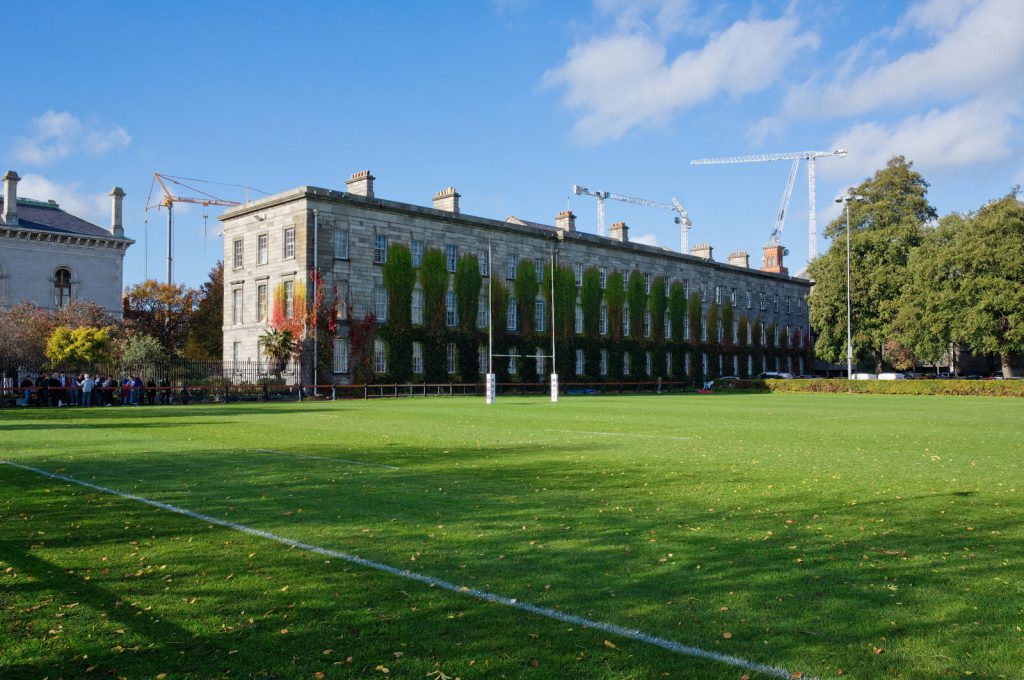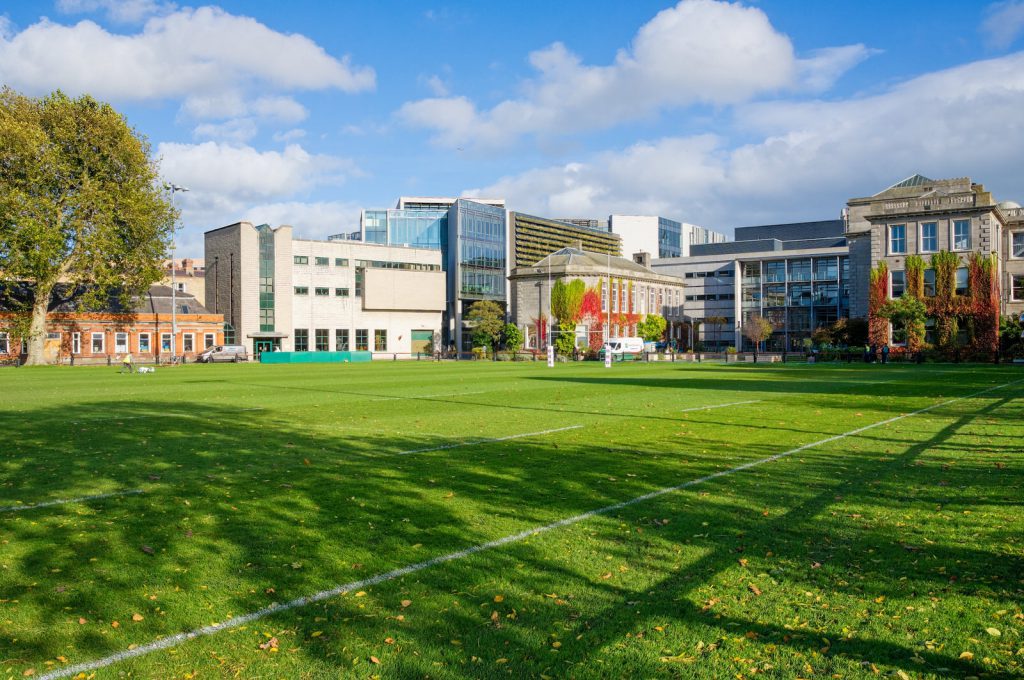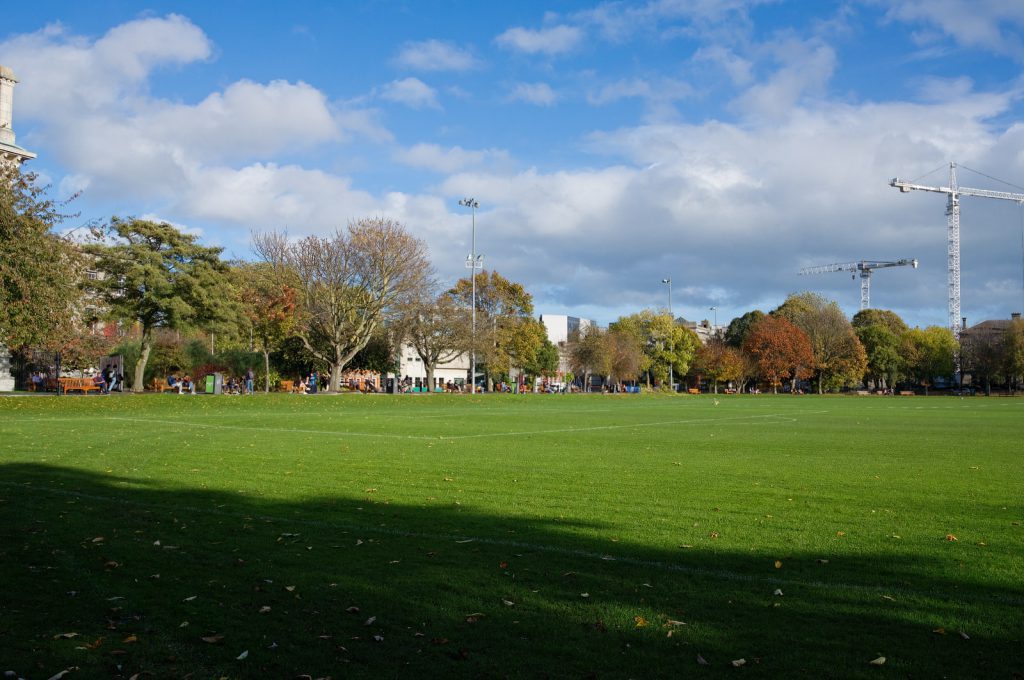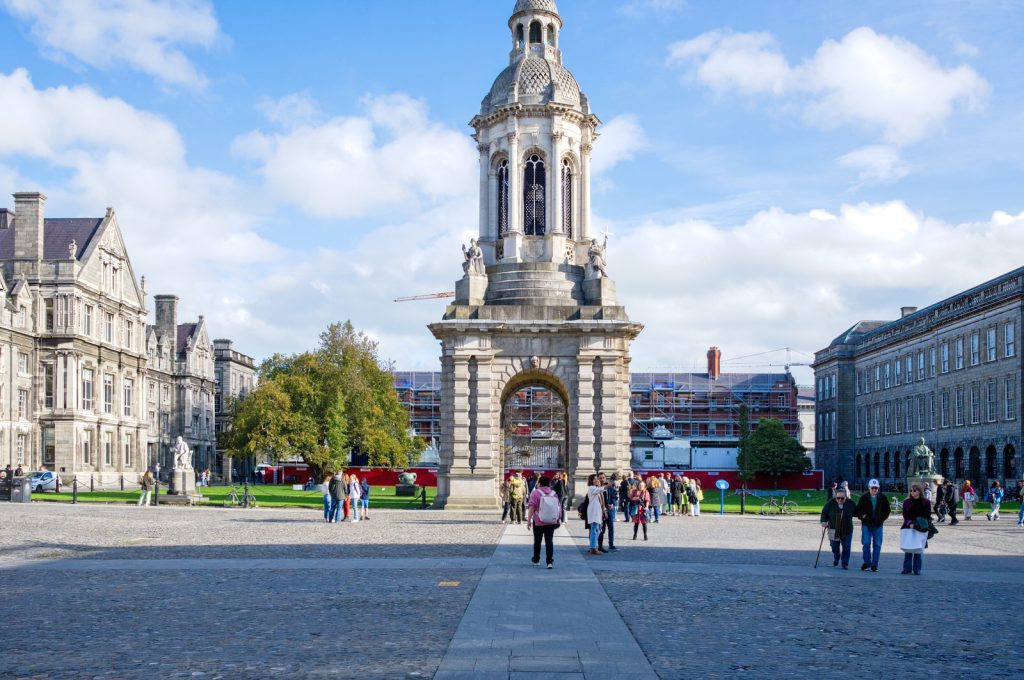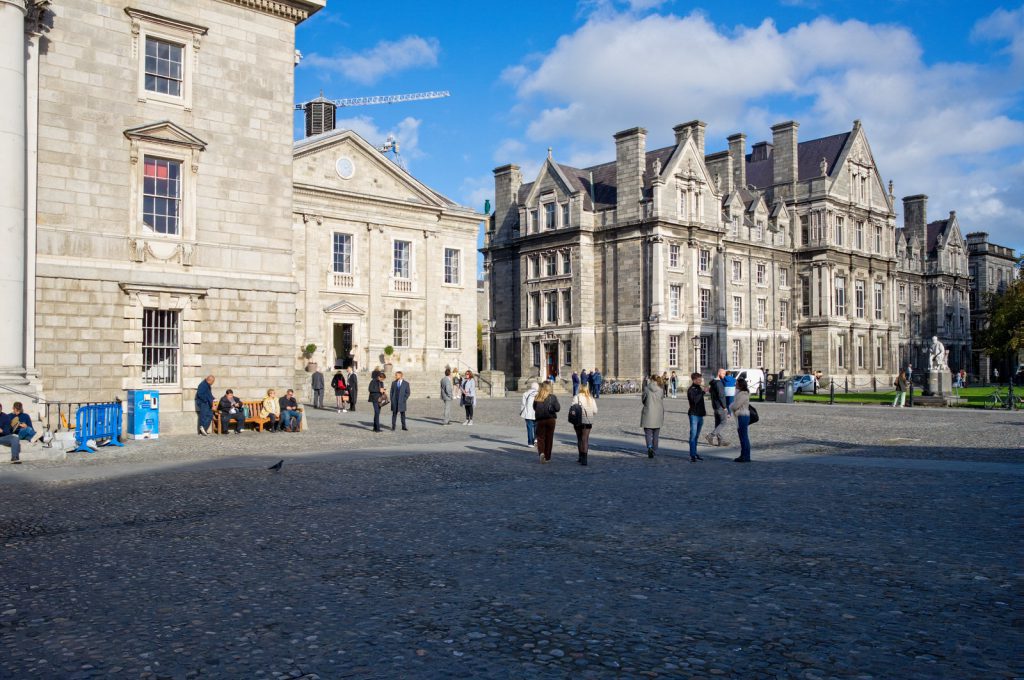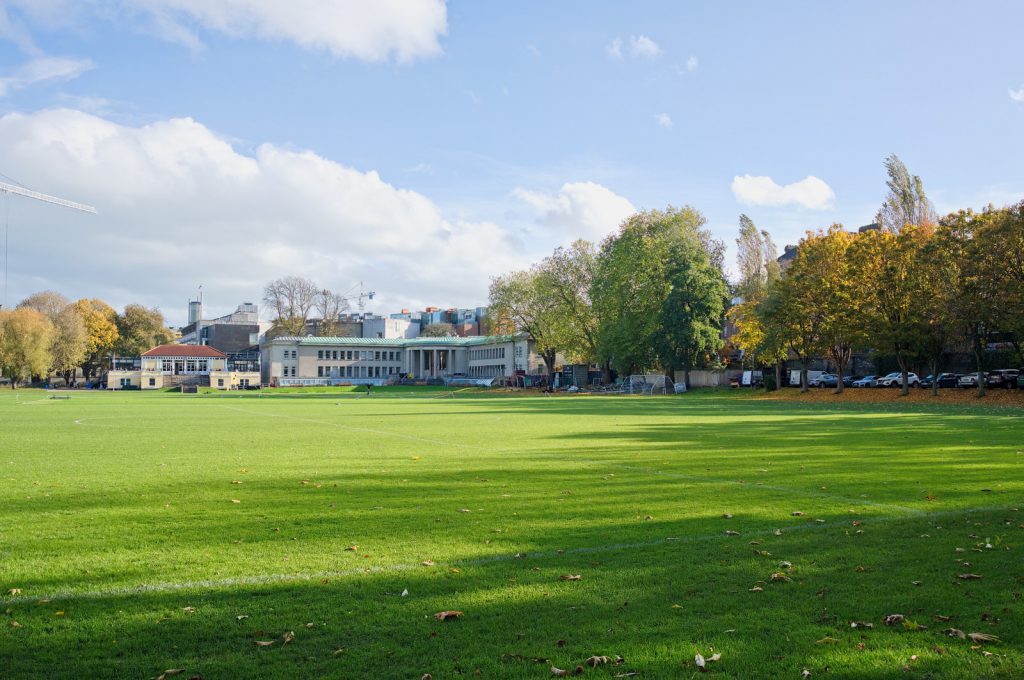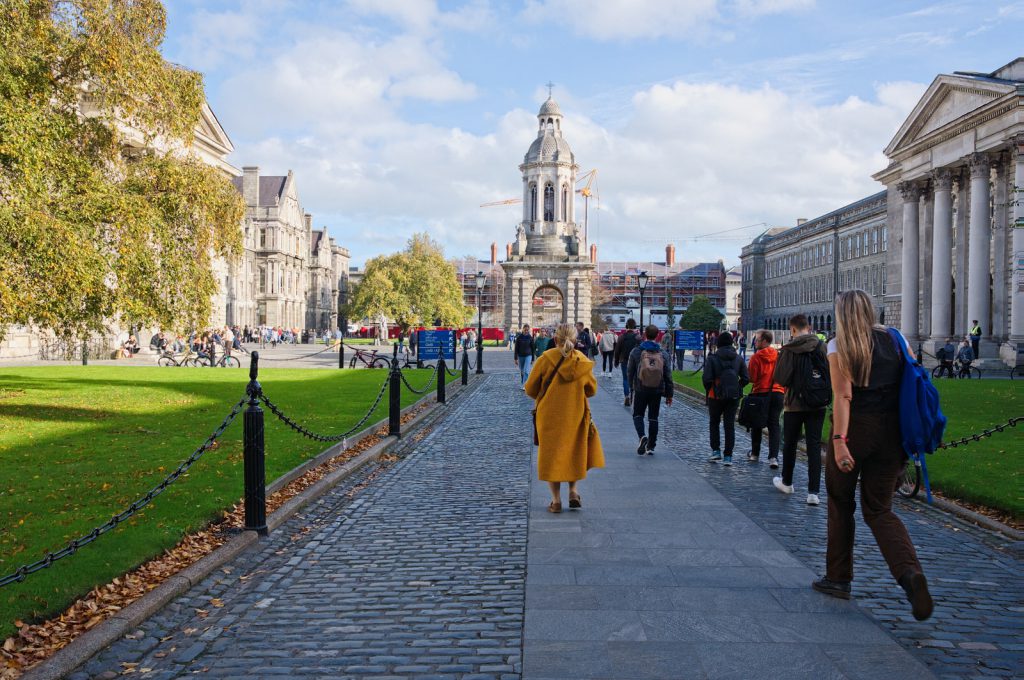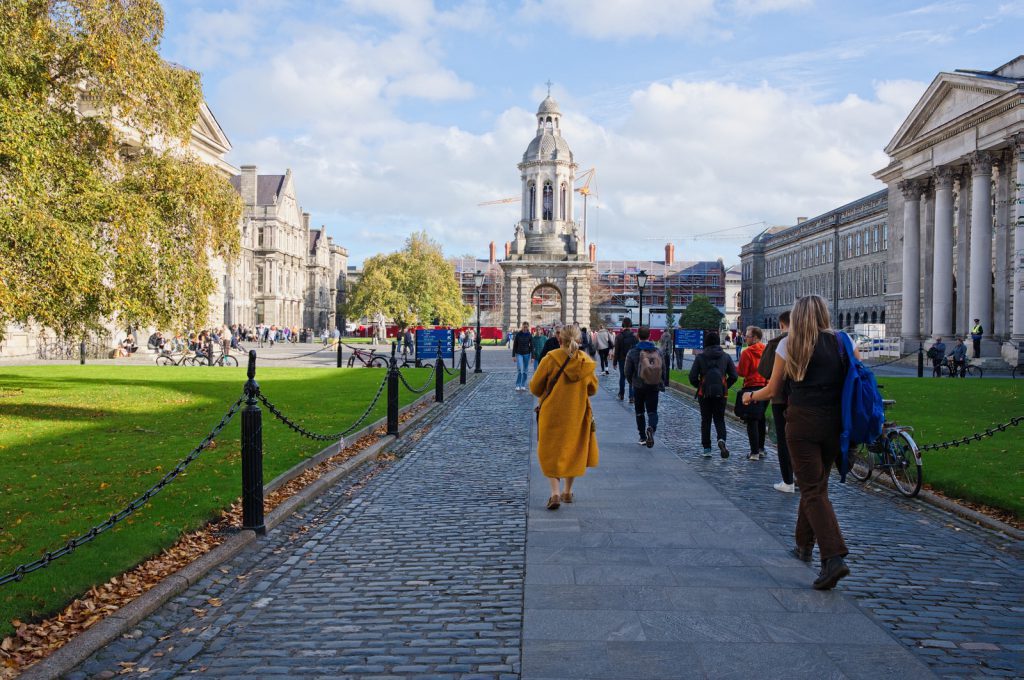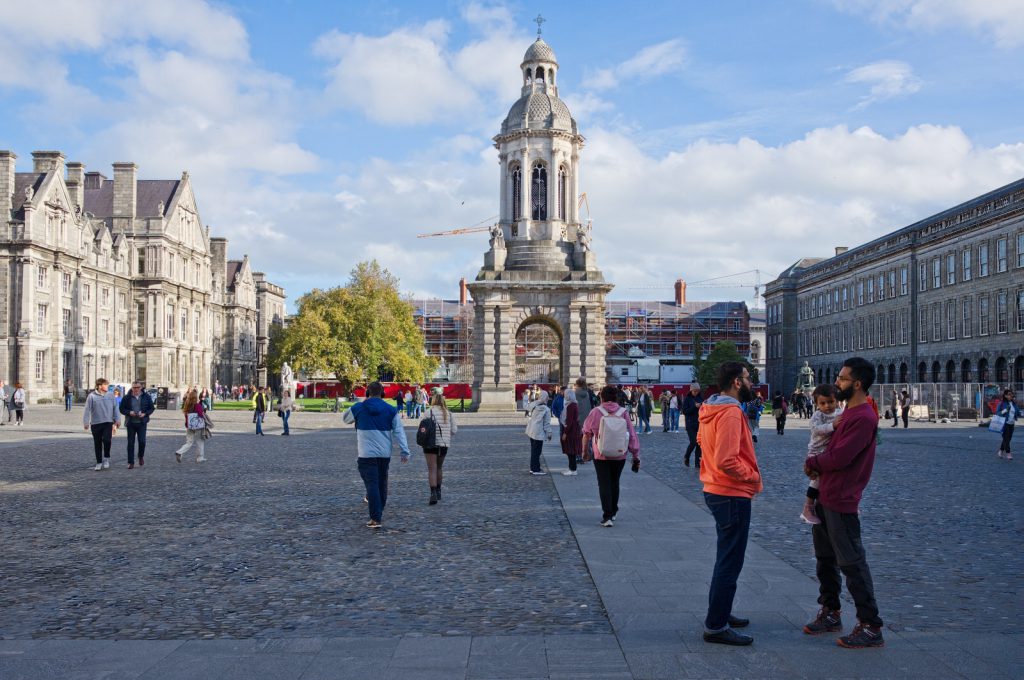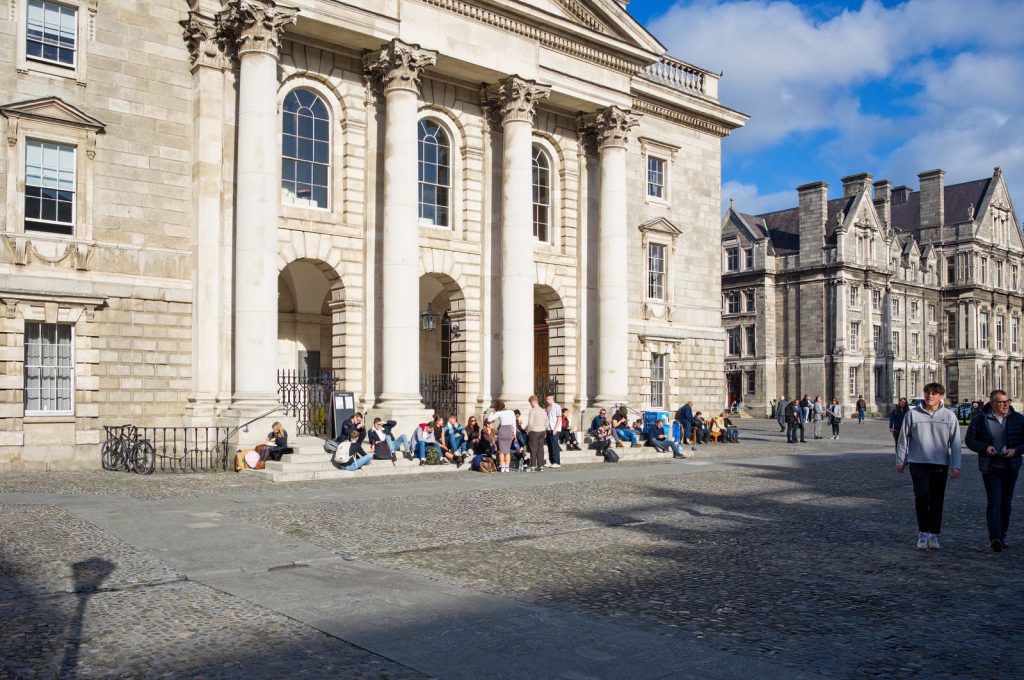JUST BEFORE HALLOWEEN 2022
Widely considered one of Europe’s elite institutions, Trinity is Ireland’s most prestigious university, in part due to its long and distinguished history.
Academically, it is divided into three faculties comprising 23 schools, offering degree and diploma courses at both undergraduate and postgraduate levels. The admission procedure is based exclusively on academic merit, with the college being particularly acclaimed in law, literature and humanities.
It also carries out extensive research in nanotechnology, information technology, immunology, mathematics, engineering, psychology, politics and English.
Trinity College was originally established outside Dublin’s city walls in the buildings of the outlawed Catholic Augustinian Priory of All Hallows. It was set up in part to consolidate the rule of the Tudor monarchy in Ireland, and as a result was the university of the Protestant Ascendancy for much of its history.
While Catholics were admitted from the college’s foundation, for a period graduation required the taking of an oath that was objectionable to them. In 1793 this requirement was removed, but certain restrictions on membership of the college remained, as professorships, fellowships and scholarships were reserved for Protestants.
An 1873 Act of Parliament lifted these remaining restrictions. While Catholics were not formally banned from attending Trinity from that time, Ireland’s Catholic hierarchy discouraged it. Women were first admitted to the college as full members in 1904.
The Library of Trinity College is a legal deposit library for Ireland and Great Britain, containing around 7 million printed volumes and significant quantities of manuscripts, including the Book of Kells, which arrived at the college in 1661 for safekeeping after the Cromwellian raids on religious institutions. The collection housed in the Long Room includes a rare copy of the 1916 Proclamation of the Irish Republic and a 15th-century wooden harp, which is the model for the current emblem of Ireland. The library receives more than 500,000 visitors per year, making it the most important in Ireland.

